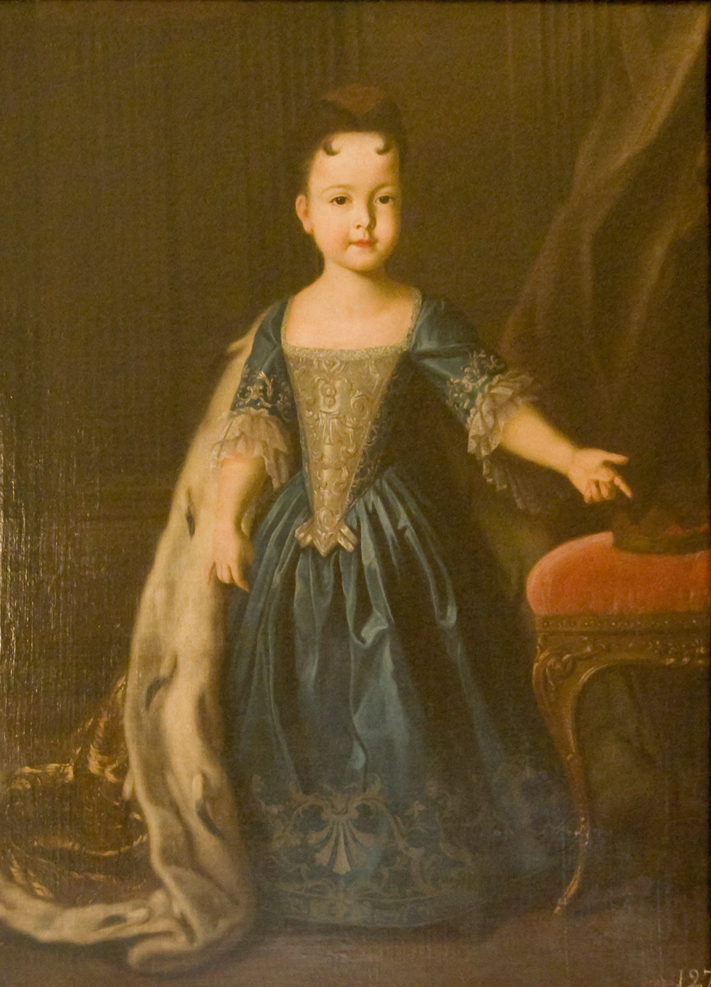compiled by Susan Flantzer
Pneumonia is an inflammation of the lungs caused by a bacteria or virus. Symptoms include a combination of productive and dry cough, chest pain, fever, and trouble breathing. Pneumonia was and still can be a secondary infection. It often shortens suffering among those already close to death and has thus been called “the old man’s friend.” With the introduction of antibiotics and vaccines in the 20th century, the survival rate has greatly improved. Nevertheless, in developing countries, among the very old, the very young, and the chronically ill, pneumonia remains a leading cause of death.
This does not purport to be a complete list. All images are from Wikipedia unless otherwise indicated.
*********************
Mary Stuart
 Mary’s tomb in Westminster Abbey
Mary’s tomb in Westminster Abbey
- Born: April 8, 1605 at Greenwich Palace in Greenwich, London, England
- Parents: King James I of England (also James VI, King of Scots) and Anne of Denmark
- Died: September 16, 1607, aged 2, at Stanwell Park in Stanwell, Surrey, England
- Buried: Westminster Abbey in London, England
- Wikipedia: Mary Stuart
Mary was the first child born to King James I after he succeeded Queen Elizabeth I of England. She caught a bad cold that developed into pneumonia.
*********************
Elizabeth Stuart
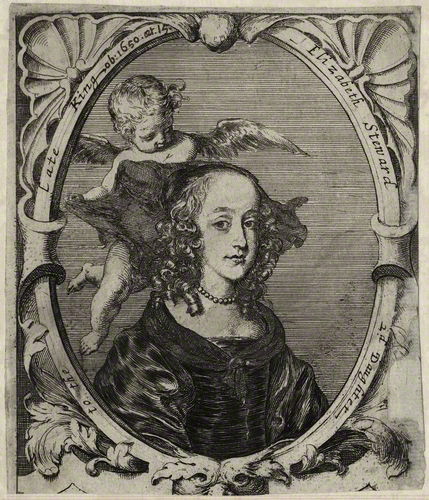
- Born: December 28, 1635 at St. James’s Palace in London, England
- Parents: King Charles I of England and Henrietta Maria of France
- Died: September 8, 1650, aged 14, at Carisbrooke Castle in Carisbrooke, Isle of Wight, England
- Buried: St. Thomas’s Church in Newport, Isle of Wight, England
- Wikipedia: Elizabeth Stuart
13-year-old Elizabeth and her 8-year-old brother Henry were able to see their father King Charles I, the day before his execution. They were his only children who were still in England. After Charles’ death, Elizabeth and Henry were not allowed to leave England. Parliament eventually moved Elizabeth to Carisbrooke Castle on the Isle of Wight. On August 23, 1650, less than a week after her arrival at Carisbrooke Castle, Elizabeth became ill with a fever. By September 1, 1650, she was so ill that she never left her bed again. A week later, Elizabeth died from pneumonia. Ironically, three days after Elizabeth died, the Council of State granted permission for her to join her sister Mary, who had married Willem II, Prince of Orange, in the Netherlands not knowing that she had died.
*********************
Sophia Charlotte of Hanover, Queen of Prussia

- Born: October 30, 1668 at Iburg Castle, Osnabrück, Electorate of Hanover, now in Lower Saxony, Germany
- Parents: Ernst August, Elector of Hanover and Sophia of the Palatinate
- Married: Friedrich I, King in Prussia in 1684
- Died: February 1, 1705, aged 36, in Hanover, Duchy of Brunswick-Lüneburg, now in Lower Saxony, Germany
- Buried: Berlin Cathedral in Berlin, Kingdom of Prussia, now in Brandenburg, Germany
- Unofficial Royalty: Sophia Charlotte of Hanover, Queen of Prussia
Sophia Charlotte was the sister of King George I of Great Britain and the mother of King Friedrich Wilhelm I of Prussia. She died from pneumonia while visiting her mother in Hanover.
*********************
Friedrich II, Landgrave of Hesse-Homburg

- Born: 30 March 30, 1633 at Bad Homburg Castle in Homburg, Landgraviate of Hesse-Homburg, now in Hesse, Germany
- Parents: Friedrich I, Landgrave of Hesse-Homburg and Margaret Elisabeth of Leiningen-Westerburg
- Married: (1) Margarethe Brahe in 1661 (2) Luise Elisabeth of Courland in 1670 (3) Sophie Sybille of Leiningen-Westerburg in 1691
- Died: January 23, 1708, aged 74, at Bad Homburg Castle in Homburg, Landgraviate of Hesse-Homburg, now in Hesse, Germany
- Buried: in the crypt of the Crypt in the castle church at Bad Homburg Castle
in Homburg, Landgraviate of Hesse-Homburg, now in Hesse, Germany
- Wikipedia: Friedrich II, Landgrave of Hesse-Homburg
Friedrich died from pneumonia after returning home from a journey to Leipzig, Kingdom of Prussia to meet King Karl XII of Sweden.
*********************
King Willem II of the Netherlands

- Born: December 6, 1792 at Noordeinde Palace, The Hague, Dutch Republic, now in the Netherlands
- Parents: King Willem I of the Netherlands and Wilhelmine of Prussia
- Married: Grand Duchess Anna Pavlovna of Russia in 1816
- Died: March 17, 1849, aged 56, in Tilburg, Netherlands
- Buried: Royal Vault of the Nieuwe Kerk in Delft, the Netherlands
- Unofficial Royalty: King Willem II of the Netherlands
On February 13, 1849, when Willem addressed parliament, it was noted that he looked ill and his voice was weak. He was probably suffering from an upper respiratory illness. He decided to spend some time in his favorite town Tilburg resting. On March 13, 1849, Willem said goodbye to his wife and drove in a carriage to Rotterdam to visit a steam yacht under construction. At the top of some stairs, he became confused, his boot became stuck in his cloak, and he fell. Once Willem reached Tilburg, his health problems got worse. It is likely that his upper respiratory illness had developed into pneumonia. Willem was no longer able to concentrate on state papers. For two days, he was seriously short of breath. On March 17, 1849, Willem’s condition was very critical. Around three o’clock in the afternoon, Willem had such a severe attack of breathlessness that he jumped into his doctor’s arms. The king was put back into his chair, and then he died.
*********************
Marie-Thérèse-Charlotte of France, Duchess of Angoulême

- Born: December 19, 1778 at the Palace of Versailles in Versailles, France
- Parents: Louis XVI, King of France and Maria Antonia, Archduchess of Austria (better known as Marie Antoinette)
- Married: her first cousin Louis-Antoine, Duke of Angoulême in 1799
- Died: October 19, 1851, aged 72, Schloss Frohsdorf in Lanzenkirchen, Austria
- Buried: Kostanjevica Monastery, then in Gorizia, Italy, later in Nova Gorica, then in Yugoslavia, now in Slovenia
- Unofficial Royalty: Marie-Thérèse-Charlotte of France, Duchess of Angoulême
Marie-Thérèse-Charlotte was the only one of the four children of King Louis XVI of France and Maria Antonia, Archduchess of Austria (better known as Marie Antoinette), to reach adulthood. She married her first cousin Louis Antoine, Duke of Angoulême, the eldest son of the future Charles X, King of France, who was her father’s younger brother. Marie-Thérèse-Charlotte died of pneumonia, three days after the fifty-eighth anniversary of the execution of her mother.
*********************
Ida of Saxe-Meiningen, Princess Bernhard of Saxe-Weimar-Eisenach

- Born: August 13, 1794 at Meiningen, Duchy of Saxe-Meiningen, now in Thuringia, Germany
- Parents: Georg I, Duke of Saxe-Meiningen and Luise Eleonore of Hohenlohe-Langenburg
- Married: Prince Bernhard of Saxe-Weimar-Eisenach in 1816
- Died: April 4, 1852, aged 57, in Weimar, Grand Duchy of Saxe-Weimar-Eisenach, now in Thuringia, Germany
- Buried: Ducal Burial Chapel of Saxe-Weimar-Eisenach in the Historical Cemetery in Weimar, Grand Duchy of Saxe-Weimar-Eisenach, now in Thuringia, Germany
- Wikipedia: Ida of Saxe-Meiningen, Princess Bernhard of Saxe-Weimar-Eisenach
Ida was the younger sister of Adelaide of Saxe-Meiningen who married King William IV of the United Kingdom. She died of pneumonia. Her last words were, “But I hope to sleep well tonight.”
********************
Prince Leopold, Duke of Brabant

- Born: June 12, 1859 at the Royal Palace of Laeken in Laeken, Brussels, Belgium
- Parents: Leopold II, King of the Belgians and Marie Henriette of Austria
- Died: January 22, 1869, aged 9, at the Royal Palace of Laeken in Laeken, Brussels, Belgium
- Buried: Church of Our Lady of Laeken in Laeken, Brussels, Belgium
- Wikipedia: Prince Leopold, Duke of Brabant
Leopold was his parents’ only son. Unfortunately, he died young from pneumonia. King Leopold II blamed his wife Marie Henriette for their son’s death. Little Leopold had fallen into a pond, developed pneumonia, and died. Upon his death, Leopold II was succeeded by his nephew, Albert I.
********************
Louise of the Netherlands, Queen of Sweden

- Born: August 5, 1828 in The Hague, the Netherlands
- Parents: Prince Frederik of the Netherlands and Princess Luise of Prussia
- Married: King Carl XV of Sweden
- Died: March 30, 1871, aged 42, at the Royal Palace in Stockholm, Sweden
- Buried: Riddarholm Church in Stockholm, Sweden
- Louise of the Netherlands, Queen of Sweden
Louise traveled to the Netherlands to be at her mother’s deathbed in late 1870. Upon returning, her husband fell ill and she nursed him back to health. Physically drained, Lovisa contracted pneumonia and died.
********************
Prince August of Sweden, Duke of Dalarna

- Born: August 24, 1831 at Drottningholm Palace in Drottningholm, Sweden
- Parents: King Oscar I of Sweden and Josephine of Leuchtenberg
- Married: Princess Therese of Saxe-Altenburg
- Died: March 4, 1873, aged 41, at Royal Palace in Stockholm, Sweden
- Buried: Riddarholm Church in Stockholm, Sweden
- Wikipedia: Prince August of Sweden, Duke of Dalarna
August was the youngest of his parents’ five children. He died from pneumonia.
********************
Prince Joseph Ferdinand of Saxe-Coburg and Gotha
- Born: May 21, 1869 at the Leopoldina Palace in Rio de Janeiro, Brazil
- Parents: Prince Ludwig August of Saxe-Coburg and Gotha and Princess Leopoldina of Brazil
- Died: August 13, 1888, aged 19 in Wiener Neustadt, Austria
- Buried: St. Augustine’s Church in Coburg, Duchy of Saxe-Coburg and Gotha, now in Bavaria, Germany
- Wikipedia: Prince Joseph Ferdinand of Saxe-Coburg and Gotha
Also known by his Portuguese name José Fernando, Joseph Ferdinand was a prince of the House of Saxe-Coburg and Gotha-Koháry, the Catholic cadet branch of the House of Saxe-Coburg and Gotha. His paternal grandfather Prince August of Saxe-Coburg and Gotha was a first cousin of Queen Victoria and her husband Prince Albert of Saxe-Coburg and Gotha. Joseph Ferdinand’s mother was the daughter of Emperor Pedro II of Brazil. At the age of 19, Joseph Ferdinand died from pneumonia
********************
Prince Albert Victor, Duke of Clarence and Avondale

Known as Eddy in his family, he was the elder of two surviving sons of the future King Edward VII and the grandson of Queen Victoria. The month before his death, Eddy became engaged to Princess Mary of Teck. In the midst of the wedding preparations, Eddy developed a high fever on January 7, 1892. His sister Victoria and other household members already had been ill with influenza, which Eddy also developed. Two days later, his lungs became inflamed and pneumonia was diagnosed. In his delirium, Eddy frequently shouted out the name “Hélène”, the name of the woman he originally wanted to marry.
In the early morning hours of January 14, 1892, a chaplain was summoned to Eddy’s bedroom at Sandringham. There, surrounded by his parents, the Prince and Princess of Wales, his brother George, his sisters Louise, Victoria, and Maud, his fiancée Mary, and her mother the Duchess of Teck, Eddy died at 9:35 a.m His fiancée married his brother George and they and eventually became the beloved King George V and Queen Mary.
********************
King Milan I of Serbia

- Born: August 22, 1854, in Mărășești, in Moldavia, Ottoman Empire, now in Romania
- Parents: Miloš Obrenović and Marija Obrenović, born Elena Maria Catargiu
- Married: Natalija Keschko
- Died: February 11, 1901, aged 46, in Vienna, Austria
- Buried: Krušedol Monastery in Vojvodina, Serbia
- Unofficial Royalty: King Milan I of Serbia
In 1889, Milan suddenly abdicated the Serbian throne without any apparent reason and his twelve-year-old son Alexander became king. After his abdication, Milan was mostly exiled from Serbia. While in Vienna, he became ill with pneumonia. The doctors who examined determined there was no hope. Emperor Franz Joseph of Austria provided a comfortable house for Milan and sent Hungarian Count Ergeni Zici to be with him during his final days. Despite requesting not to be buried in Serbia, Milan was buried there.
********************
Archduchess Elisabeth Franziska of Austria

- Born: January 17, 1831 in Buda, Hungary, now Budapest, Hungary
- Parents: Archduke Joseph of Austria, Palatine of Hungary and Maria Dorothea von Württemberg
- Married: (1) Archduke Ferdinand Karl Viktor of Austria-Este in 1847, died 1849 (2) Archduke Karl Ferdinand of Austria in 1854
- Died: February 14, 1903, aged 72, at the Albertina Palace in Vienna, Austria
- Buried: St. Helena’s Cemetery in Baden bei Wien, Austria
- Wikipedia: Archduchess Elisabeth Franziska of Austria
Elisabeth Franziska is an ancestor of the Spanish royal family via her daughter Maria Christina who married King Alfonso XII of Spain. She developed pneumonia while staying with her eldest son Archduke Friedrich of Austria, Duke of Teschen at his Vienna palace. Although the family wanted her buried at the traditional burial site, the Imperial Crypt at the Capuchin Church in Vienna, Elisabeth Franziska had made arrangements for her burial in nearby Baden bei Wein, Austria where she lived most of the time.
********************
Grand Duke Alexei Alexandrovich of Russia

- Born: January 14, 1850 at the Winter Palace in St. Petersburg, Russia
- Parents: Alexander II, Emperor of All Russia and Marie of Hesse and by Rhine (Empress Maria Alexandrovna)
- Died: November 27, 1908, aged 58, in Paris, France
- Buried: Grand Ducal Mausoleum adjacent to the Peter and Paul Cathedral in St. Petersburg, Russia
- Unofficial Royalty: Grand Duke Alexei Alexandrovich of Russia
Alexei, who never married, is most well-known for his coast-to-coast official visit to the United States in 1871 where one of the highlights was buffalo hunting with Buffalo Bill Cody, General George Armstrong Custer, and General Philip Sheridan. During the later part of his life, Alexei lived in Paris where he was a familiar figure in restaurants and theaters. He died of pneumonia in Paris, the city he loved.
********************
Princess Marie of Hohenzollern-Sigmaringen, Countess of Flanders

Born: November 17, 1845 at Schloss Sigmaringen in Sigmaringen, Principality of Hohenzollern-Sigmaringen, now in Baden-Württemberg, Germany
Parents: Sovereign Prince Karl Anton of Hohenzollern-Sigmaringen and Princess Josephine of Baden
Married: Prince Philippe of Belgium, Count of Flanders in 1867
Died: November 26, 1912, aged 67, in Brussels, Belgium
Buried: Church of Our Lady of Laeken in Laeken, Brussels, Belgium
Unofficial Royalty: Princess Marie of Hohenzollern-Sigmaringen, Countess of Flanders
Marie is an ancestor of the Belgian royal family. She married Prince Philippe of Belgium, Count of Flanders, the third but second surviving son of King Leopold I of Belgium. Because of the death of the only son of King Leopold II, the brother of Marie’s husband, Marie’s son Albert succeeded his uncle King Leopold II upon his death as King Albert I. Marie lived to see her son become King Albert I of Belgium in 1909. She died three years later after suffering from pneumonia for several days.
********************
Emperor Franz Joseph I of Austria

- Born: August 18, 1830, at Schönbrunn Palace in Vienna, Austria
- Parents: Archduke Franz Karl of Austria and Princess Sophia of Bavaria
- Married: Elisabeth, Duchess in Bavaria in 1854
- Died: November 21, 1916, aged 86 at Schönbrunn Palace in Vienna, Austria
- Buried: Imperial Crypt at the Capuchin Church in Vienna, Austria
- Unofficial Royalty: Emperor Franz Joseph I of Austria
The fourth longest-reigning European monarch, Franz Joseph saw much tragedy in his family: the execution of his brother Emperor Maximilian of Mexico in 1867, the suicide of his only son Crown Prince Rudolf in 1889, the assassination of his wife Empress Elisabeth in 1898, and the assassination of his nephew and heir Archduke Franz Ferdinand in 1914. After catching a cold, Franz Joseph developed pneumonia and died.
********************
Louise Margaret of Prussia, Duchess of Connaught

- Born: July 25, 1860, at the Marmorpalais (Marble Palace) in Potsdam, Kingdom of Prussia, now in Brandenburg, Germany
- Parents: Prince Friedrich Karl of Prussia and Princess Maria Anna of Anhalt-Dessau
- Married: Prince Arthur of the United Kingdom, Duke of Connaught
- Died: March 14, 1917, aged 56, at Clarence House in London, England
- Buried: first at St George’s Chapel, Windsor Castle in Windsor, England; transferred in 1928 to the Royal Burial Ground, Frogmore in Windsor, England
- Unofficial Royalty: Louise Margaret of Prussia, Duchess of Connaught
Louise Margaret was ill with bronchitis that developed into pneumonia and caused her death. She became the first member of the British Royal Family to be cremated, which was done at Golders Green Crematorium. Burying ashes in an urn was still unfamiliar at the time, and her urn was placed in a coffin during the funeral.
********************
Grand Duke Nicholas Konstantinovich of Russia

Grand Duke Nicholas Konstantinovich with his wife
- Born: February 14, 1850 in St. Petersburg, Russia
- Parents: Grand Duke Konstantin Nikolaevich of Russia and Alexandra of Saxe-Altenburg
- Married: Nadezhda Aleksandrovna von Dreyer in 1882
- Died: January 26, 1918, aged 67, in Tashkent, Russia, now in Uzbekistan
- Buried: in a park next to St. George’s Cathedral in Tashkent, Russia, now in Uzbekistan
- Wikipedia: Grand Duke Nicholas Konstantinovich of Russia
A grandson of Nicholas I, Emperor of All Russia, Nicholas stole three valuable diamonds from an icon that belonged to his mother. He was declared insane and was banished to Tashkent, Russia, now in Uzbekistan. Konstantin suffered from asthma. Shortly after the October Revolution and the establishment of Soviet power in Tashkent, Nicholas, already compromised with asthma, died in a summer house from pneumonia.
********************
Emperor Karl I of Austria

- Born: August 17, 1887 at Persenbeug Castle in Persenbeug-Gottsdorf, Austria
- Parents: Archduke Otto Franz of Austria and Princess Maria Josepha of Saxony
- Married: Princess Zita of Bourbon-Parma in 1911
- Died: April 1, 1922, aged 34, in Madeira, Portugal
- Buried: Church of Our Lady of Monte in Madeira, Portugal
- Unofficial Royalty: Emperor Karl I of Austria
Karl was the last Emperor of Austria, reigning for only two years because the Austro-Hungarian Empire was abolished at the end of World War I. Karl and his family were exiled to the island of Madeira in Portugal. In March 1922, Karl caught a cold which developed into bronchitis and further developed into pneumonia. After suffering two heart attacks and respiratory failure, Karl died. On October 3, 2004, Pope John Paul II beatified Karl and he is known as Blessed Karl of Austria. Beatification is the third of four steps toward sainthood in the Roman Catholic Church.
********************
Charlotte of Belgium, Archduchess of Austria, Empress Carlota of Mexico

- Born: June 7, 1840 at the Royal Palace of Laeken in Laeken, Brussels, Belgium
- Parents: Leopold I, King of the Belgians (formerly Prince Leopold of Saxe-Coburg and Gotha) and Louise of Orléans
- Married: Archduke Maximilian of Austria, the future Emperor Maximilian I of Mexico, in 1857
- Died: January 19, 1927, aged 86, at Bouchout Castle in Meise, Belgium
- Buried: Royal Crypt at the Church of Our Lady of Laeken in Laeken, Brussels, Belgium
- Unofficial Royalty: Charlotte of Belgium, Archduchess of Austria, Empress Carlota of Mexico
After the execution of her husband by a firing squad in Mexico, Charlotte returned to her homeland, Belgium. Charlotte began to have suspicions that everyone wanted to poison her. She was examined by doctors who declared her insane. Today, it is impossible to determine the exact nature of her mental illness. Charlotte spent the rest of her life at Bouchout Castle in Meise, Belgium where her brother King Leopold II and later her nephews oversaw her care. Over the years, her mental illness seemed to lessen and Charlotte developed a passion for collecting objects that had belonged to her husband. Charlotte became ill with influenza which developed into pneumonia, causing her death.
********************
Princess Juliana of the Netherlands, formerly Queen Juliana of the Netherlands

- Born: April 30, 1909 at Noordeinde Palace in The Hague, the Netherlands
- Parents: Duke Henry of Mecklenburg-Schwerin and Queen Wilhelmina of the Netherlands
- Married: Prince Bernhard of Lippe-Biesterfeld in 1937
- Died: March 20, 2004, aged 94, at Soestdijk Palace in Baarn, the Netherlands
- Buried: Nieuwe Kerk in Delft, the Netherlands
- Unofficial Royalty: Queen Juliana of the Netherlands
Juliana abdicated in favor of her daughter Beatrix in 1980 and indicated that she wanted to be styled as Her Royal Highness Princess Juliana. After 1995, when Juliana’s general health began to decline, she made fewer public appearances. Her last public appearance was in 1998 at the wedding of her grandson Prince Maurits. By 2001, Juliana no longer recognized her family and had been suffering from Alzheimer’s disease for several years. Juliana died in her sleep at the age of 94 due to pneumonia, in the presence of her three eldest children.
********************
King Abdullah of Saudi Arabia

- Born: August 1, 1924, in Riyadh, Emirate of Nejd, now in the Kingdom of Saudi Arabia
- Parents: Abdulaziz, Emir of Nejd, later the first King of Saudi Arabia (also known as Ibn Saud) and Sheikha Fahda bint Asi Al Shuraim
- Married: more than eleven wives
- Died: January 23, 2015, aged 90, in Riyadh, Saudi Arabia
- Buried: Al-Oud Cemetery in Riyadh, Saudi Arabia
- Unofficial Royalty: King Abdullah of Saudi Arabia
Abdullah died at the age of 90, three weeks after being hospitalized for pneumonia.
********************

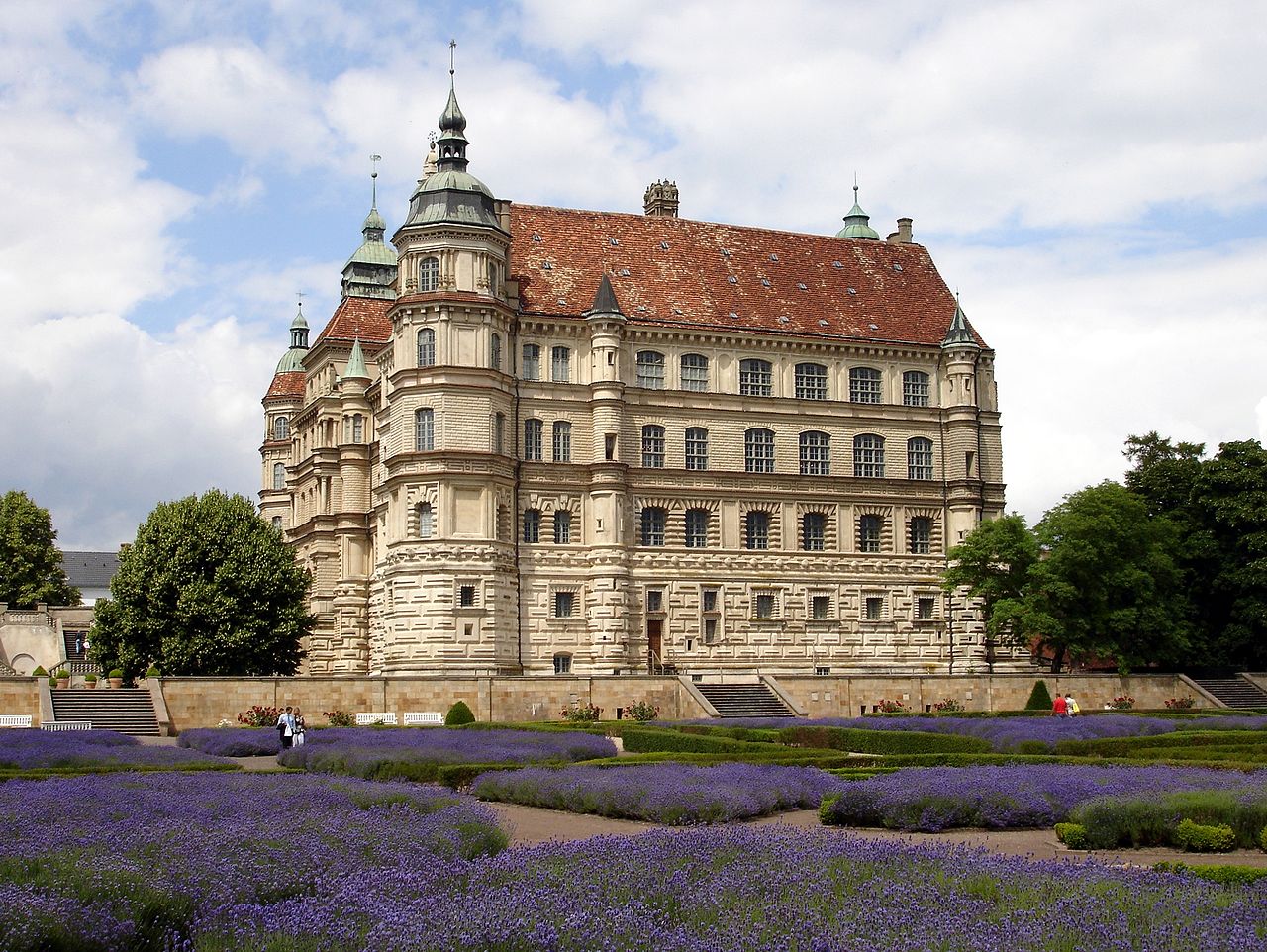
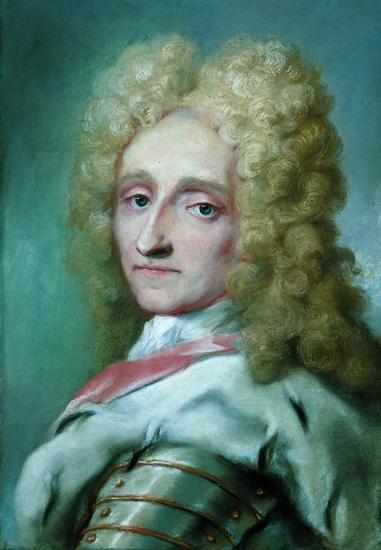




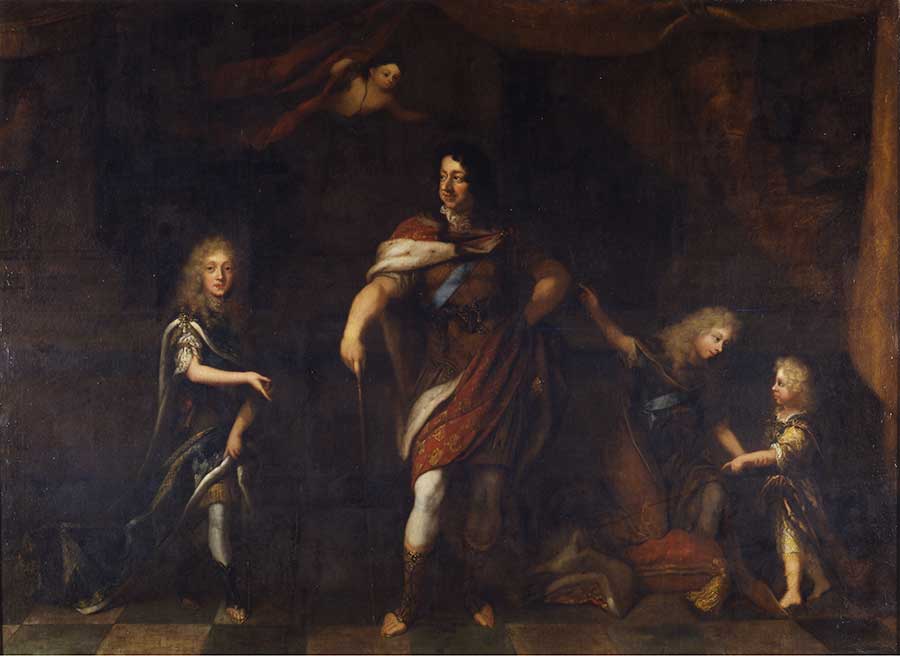











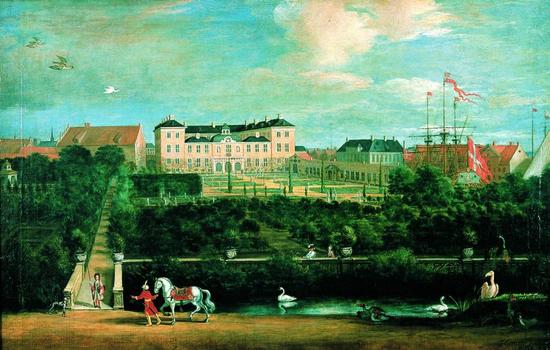









 Mary’s tomb in Westminster Abbey
Mary’s tomb in Westminster Abbey
























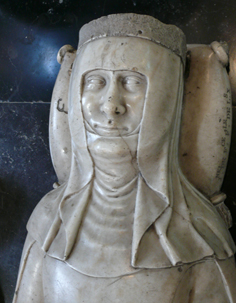
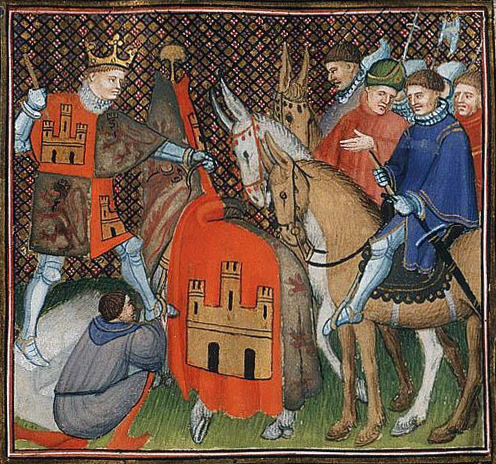

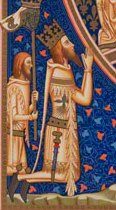
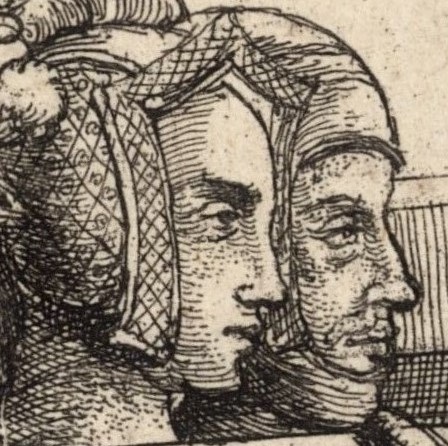 Blanche of Lancaster and John of Gaunt
Blanche of Lancaster and John of Gaunt

















